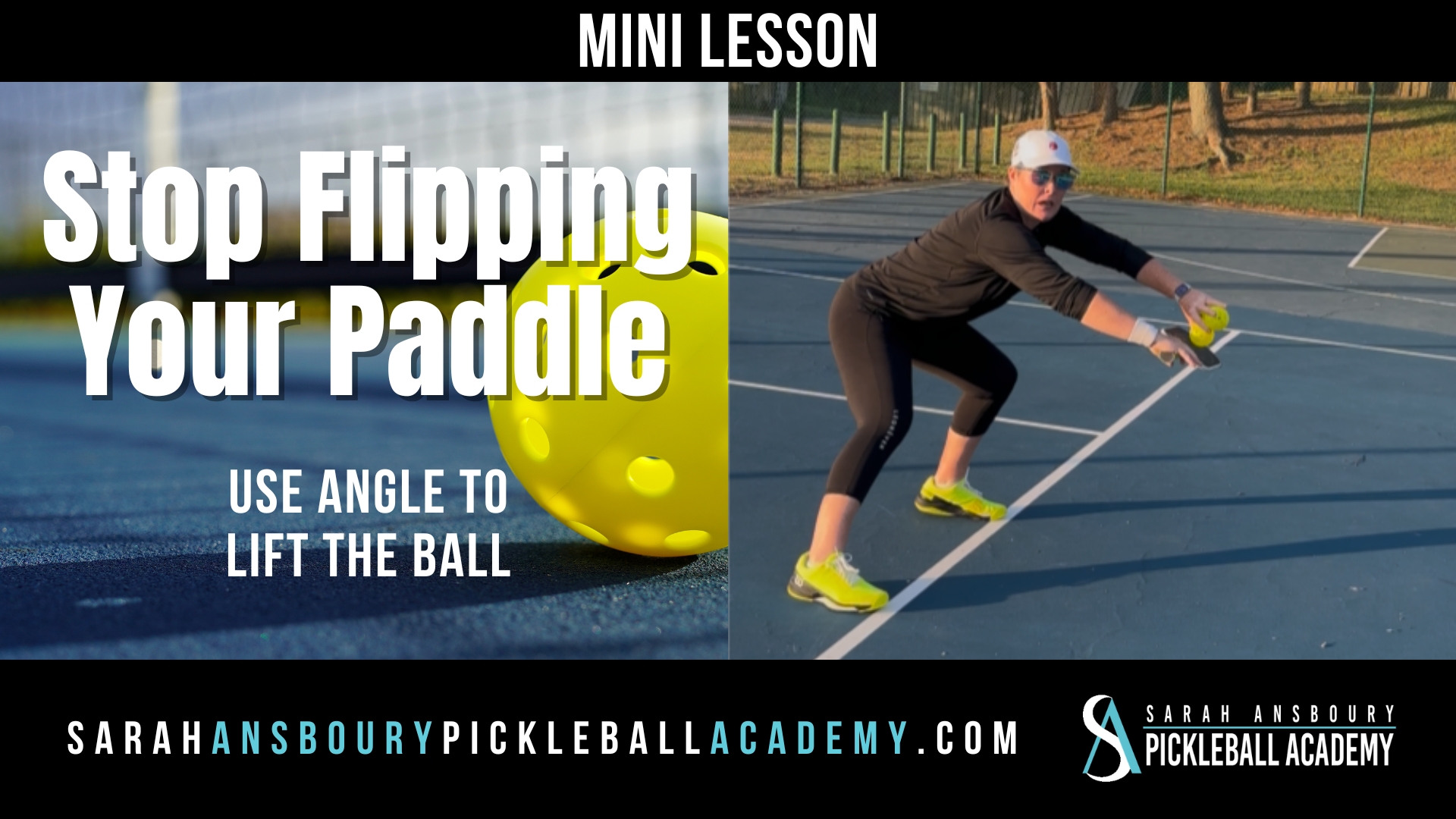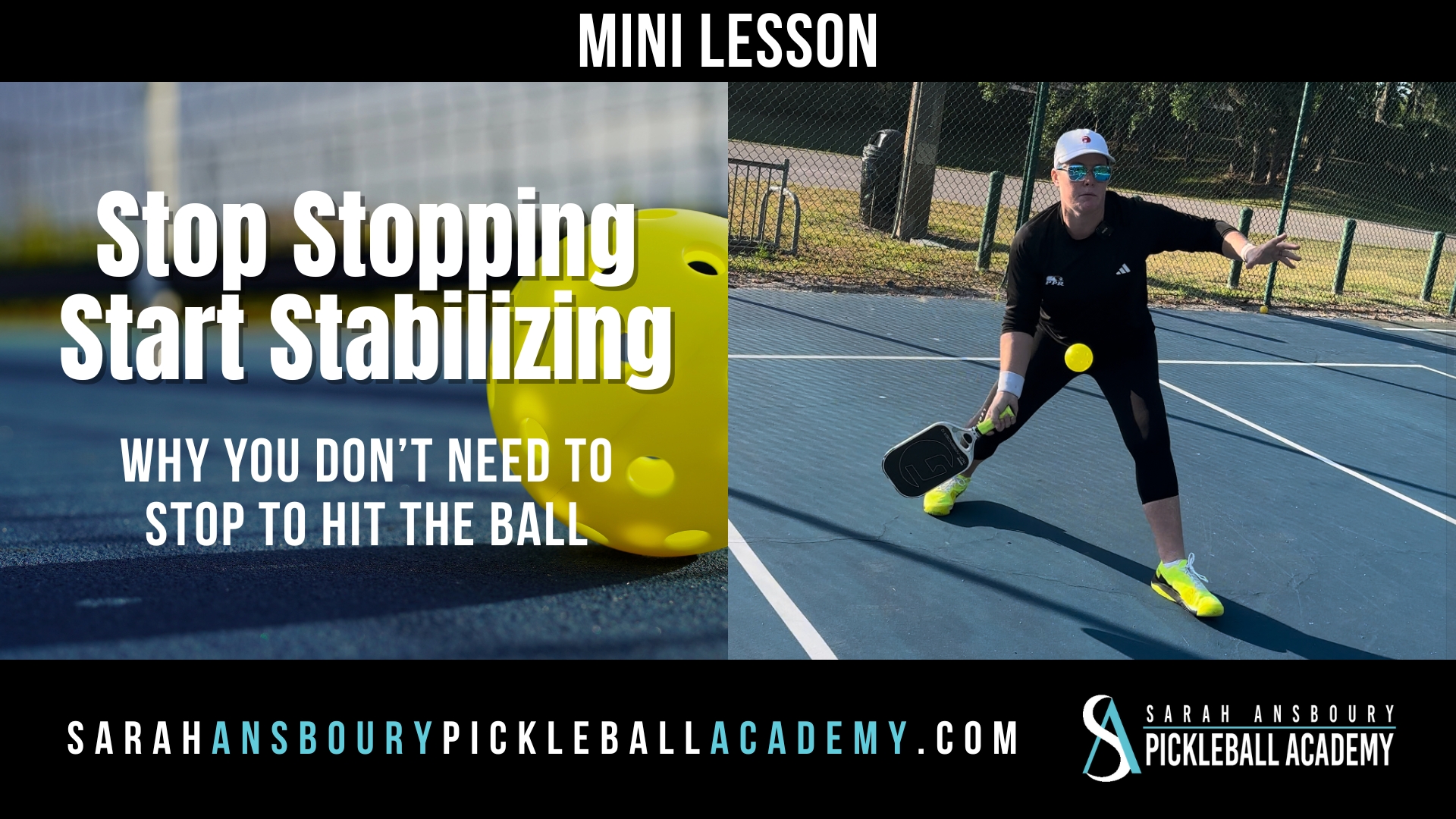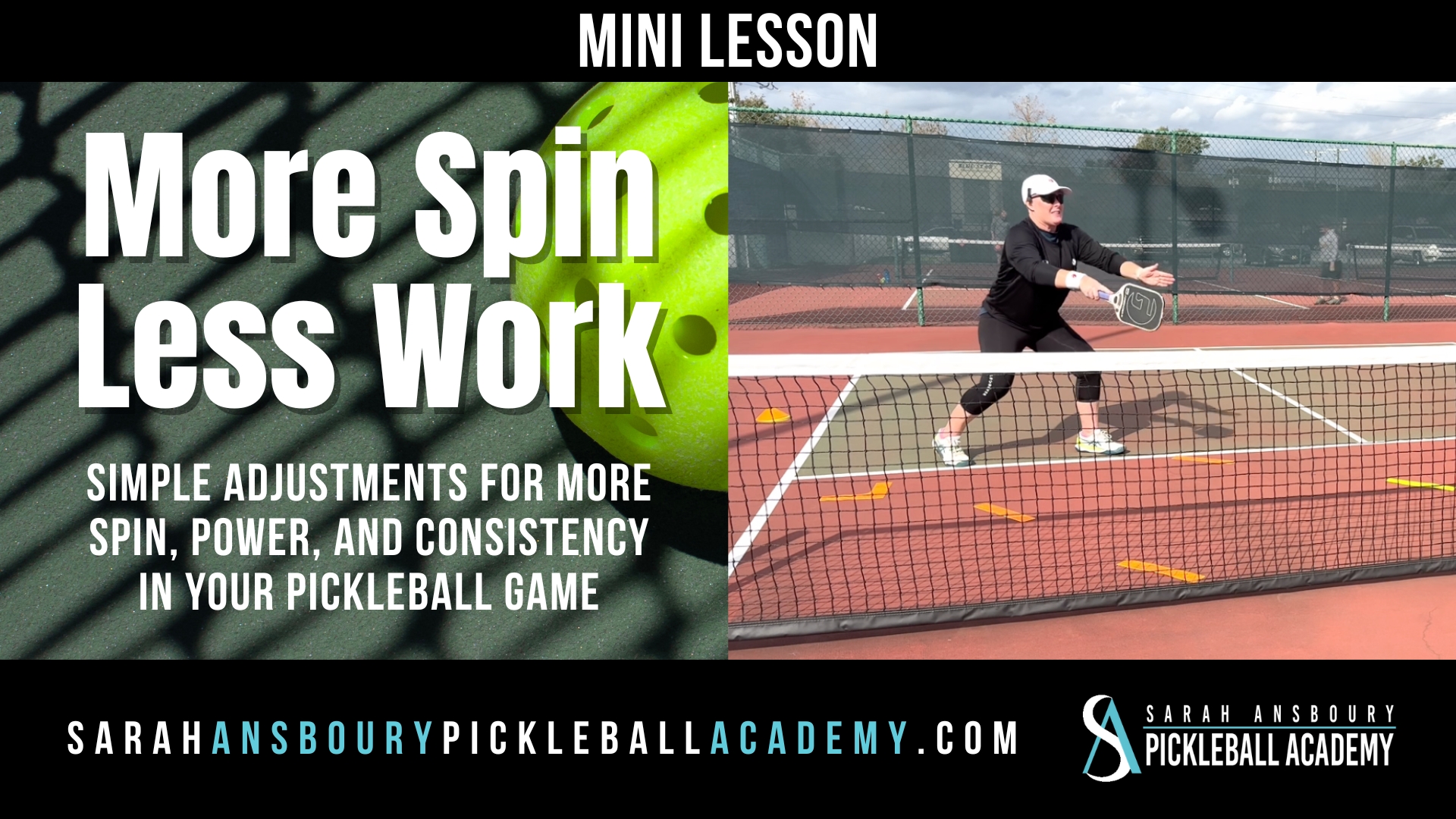Pickleball lob shots are fairly common among new pickleball players, it is used less frequently among advanced players. I encourage you to use them when the time is right and show you the safe and proper way to defend against the lob.
In this week’s video we focus on when to use the lob as another weapon in your pickleball arsenal and we also really focus on how to defend against the lob, what mistakes to avoid, and above all how to do it smoothly and safely…
See the the Full Lesson for FREE!
When to Hit a Lob
If you notice your opponent leaning forward, into the non-volley zone, consider hitting a pickleball lob. As discussed in a previous post, you want to keep your head and chest up when you are at the non-volley zone line. So if you see your opponent’s head dropping, it will be more difficult for them to retrieve a well-hit lob. If you have confidence in your ability to lob, consider capitalizing on this opportunity.
Secondly, if you notice that your opponent is off-balance, a lob may be an effective offensive weapon. Running down a lob is difficult for anyone, but it is nearly impossible if the player is not beginning from a balanced position to start.
Where to Hit a Lob
At the professional level, everyone is quick enough to run down a high floating lob. At the pro level, the key is to disguise the shot and hit it just out of reach of your opponent. But at any level, you want to consider where you want to hit a lob.
Ideally, you want to go over the backhand shoulder of a player. If both of your opponents are right-handed, the left shoulder of the player on the “odd side” of the court, is the best option. If the player on the even side attempts to cover it, they are left with a backhand shot. If the other player attempts to cover it, he has to go outside the court to retrieve the ball with his forehand.
If both players are left-handed, you would want to go over the right shoulder of the player on the even side of the court. Of course, if you have two backhands in the middle, the middle of the court can be a great lob target.
Offensive or Defensive Pickleball Lob
It is important to recognize when you are lobbing if it is an offensive or defensive shot. Sometimes, hitting a defensive lob in hopes of resetting the point and/or getting yourself back into position may be the only shot you feel you can get over the net and into the court. But in most situations, you want to be offensive.
Practice hitting pickleball lobs from the non-volley zone. But be thoughtful about it…both when and where you hit pickleball lobs. Practice identifying the instances when your opponent is off-balance or leaning too far forward. Then practice hitting it where it will be most difficult for them to return.
Pickleball Lobbing Conclusion
Safety is the key when it comes to running down lobs, ensuring you move in a way that allows you to reach the ball comfortably. Communication with your partner is also crucial. Let’s start by focusing on movement. Instead of cutting through and running into the ball, aim to overshoot it by making a circular path. Avoid the common mistakes of watching the ball too much or backpedaling.
Remember, your ideal position at the non-volley line is with your paddle forward, chest up, and hips underneath you. When your opponent is out of position, take advantage of that opportunity to execute a lob. Practice the motion without the ball first, emphasizing the turn and pivot.
And when running down a lob, aim to hit a drop shot into the non-volley zone. Don’t rush back to the net after retrieving the lob. Treat it as a reset and strategically transition with your partner.
Stay tuned for more tips on working with your partner, but for now, let’s focus on mastering lobs and efficient movement on the court.
Stay in control and elevate your game with these expert techniques!










